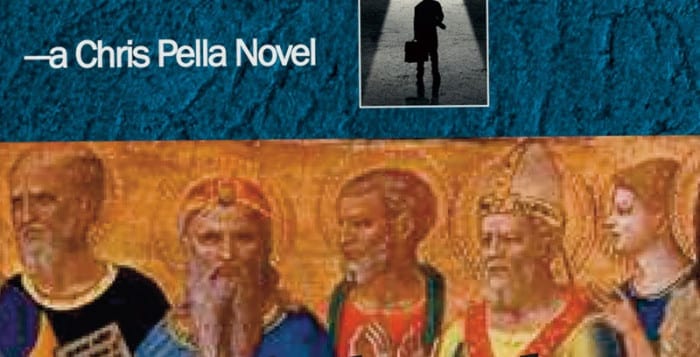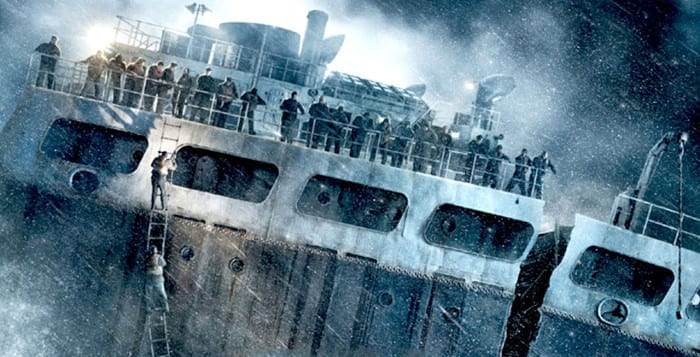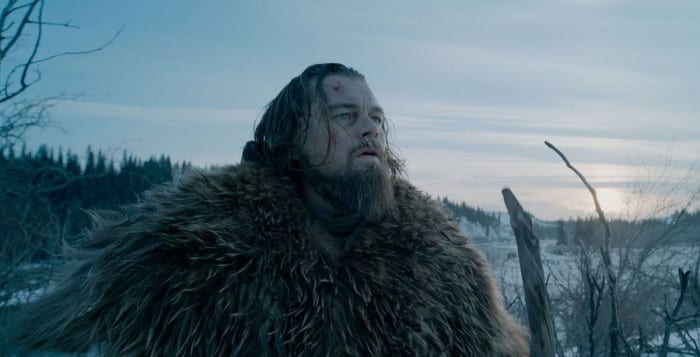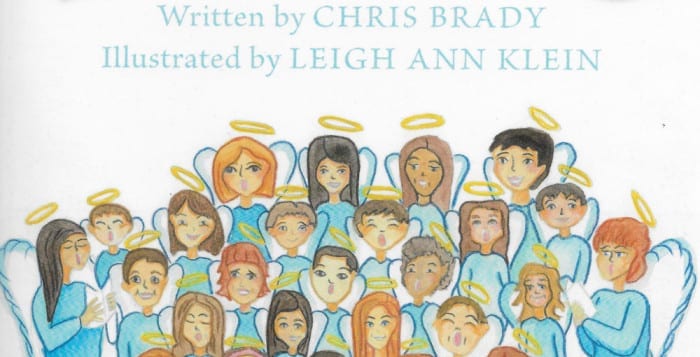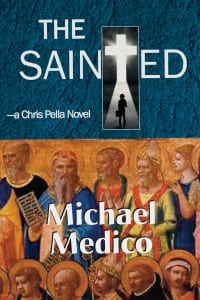
By Melissa Arnold
Michael Medico of Northport has written for decades in marketing, but now that he’s retired, he’s decided to explore writing fiction. His first novel, “The Sainted,” was released this past fall, and the 69-year-old couldn’t be happier.
The book finds Chris, a devout Catholic from Long Island, experiencing visions and dreams from the saints — ordinary men and women who lived extraordinary lives for God. The dreams begin as helpful advice and guidance, but their messages soon turn dire as the saints warn of impending doom. Chris is thrust into a classic battle of faith and doubt, good and evil, that can speak to readers of all backgrounds.
Medico took some time recently to share what it’s like being a newly published author.
Tell me a little bit about your background.
I was born in Manhattan, raised in the Bronx and then moved out to Long Island when I was about 13 years old. I was in the Navy, and after I got out I was in the advertising industry for 45 years before I retired. I’ve written pretty much my entire life, but it was mostly commercials and articles — not something really ambitious like fiction.
I love reading fiction in my spare time, especially books that deal with suspense, thrillers and the supernatural. I read Stephen King, Dean Koontz, Tom Clancy and many more in that vein. That genre has always interested me, and I thought if I wanted to write fiction, I would try that.
What was it like for you to get published?
I have an agent, Alan Morrell, and we’ve been friends for 25 years. He was able to help me find a publishing company called Brick Tower Press. The process took about a year. It’s beyond a rush, both fun and frustrating, but certainly a very rewarding experience.
What gave you the idea to write a faith-based book? Are you a person of faith?
I’m a lapsed Catholic but am very much a man of faith. I’d gone to both parochial grammar school and high school. So I have a background in Roman Catholicism and have always been inspired by the saints — these real people who lived their lives in an amazing way, regardless of whether they were single or married. Some were even martyred. There are over 10,000 people that the Church honors as saints, and I wanted to help give people an understanding of who they are while writing something entertaining at the same time.
St. Agnes is someone who amazes me. She came into the world surrounded by lights, and her devotion to God throughout her life, even as a little girl, is so inspiring. So many [saints]have faced terrible evils but are still totally consumed by their love for God.
Early in the book, you described the main character, Chris, in great detail. Is he based off of you in any way?
We do have similarities — we’re both Italian, both grew up Catholic, both raised in the Bronx and moved to Long Island, but he’s a far better man than I am. He continues to go to Mass as an adult. We’re all sinners, and Chris has his flaws, but he’s a truly good man. He represents every man, all of us. He embodies the good and bad of human life. And I think that’s important for the way Satan sees him in the book. Chris is like a trophy for [the devil] — if he can get Chris, he can get anyone.

You’ve paid a lot of homage to New York and Long Island in this book. Why did you choose to have the story take place here?
I guess I really could have set it anywhere, but I grew up in the Bronx and moved to Long Island. My wife and I settled in Huntington — it’s beautiful and has a great culture. They have the arts, restaurants, live music and, most of all, good people. It’s home. I thought that would be the best place for Chris to be.
This story has a classic good versus evil theme. How do you think people today relate to that?
Chris is thrust into the middle of this terrible evil, and I think a lot of us can relate to that in seeing the senseless tragedies that happen here on earth. We all have to find a way to respond to those things.
The book is part of a trilogy. What are your plans for the next two books?
The second book is already finished. We’re just editing it now. And I’ve written the first chapter of the third book.
Those stories will explore how the events in the first book affect people around Chris and, later, the rest of the world. The series will culminate in a great confrontation of good and evil, but I haven’t decided exactly how that will go yet.
Do you hope to write other books after this series is completed?
I’m thoroughly enjoying my writing, and I hope to do it as long as I’m able. It keeps my mind sharp. I’m contemplating writing at least one book for children in the future.
Where can people find the book or learn more about you?
I’ve set up a website at www.thesaintednovel.com. There’s a short bio on me, a sample of the book and ways to purchase it, plus a form to contact me. You can also buy the book online just about everywhere books are sold, including for Kindle and Apple devices.
Michael Medico will hold a book signing at Book Revue, 313 New York Ave., Huntington, on March 9 at 7 p.m. For more information, call 631-271-1442 or visit www.bookrevue.com.

